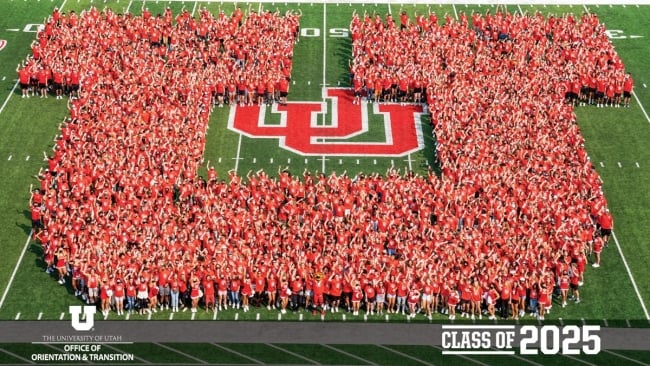You have /5 articles left.
Sign up for a free account or log in.

The University of Utah’s Class of 2025 includes historically high numbers of domestic students of color.
University of Utah Office of Orientation and Transition
Recently, I found myself watching an interview on CBS’s 60 Minutes that Lesley Stahl conducted with the host of The Daily Show, Trevor Noah. The interview, which aired in mid-December, is about how Noah used comedy to foster a sense of belonging. In my role at the University of Utah, we talk a lot about diversity, equity and inclusion, but at the heart of what we are trying to accomplish is fostering a sense of belonging and connection to each other and the world around us. While diversity, equity and inclusion leaders everywhere work diligently to create this sense of belonging, a major first step for any institution is for students, faculty and staff to begin to notice diversity in all facets of campus.
Data from the most recent Student Voice survey of college students, conducted by Inside Higher Ed and College Pulse with support from Kaplan, shows that campuses are making strides. Nearly six of every 10 students reported a “noticeable increase in diversity of students and employees on my campus this fall.” The fact that students notice more diverse campuses is a wonderful first step, but there is more work to be done to foster a sense of belonging.
While more than half of white student respondents (51 percent) report there is sufficient representation of their peers and faculty on campus, this is not the case for other minority students. Just over a third of nonwhite students (36 percent) claim that there is sufficient representation of students and faculty on campus who look like them.
What do these data tell me? There are pockets, divisions or other parts of campus that are doing well with diversity efforts, whereas our institutions as a whole continue to struggle. Last year, the Association of Public and Land-grant Universities published a report that suggested only 10 percent of science, technology, engineering and math faculty members at four-year institutions were from underrepresented backgrounds. Another report suggests diversity and inclusion on college campuses is getting worse due to the pandemic.
For a long time, many campuses have been falling short of living our values when it comes to diversity and recruiting a diverse student body and workforce, especially at public institutions. I was glad to see that students at public institutions were slightly more likely than those at private schools to agree there was a noticeable increase in diversity this fall (61 percent versus 52 percent). While I’m reluctant to draw comparisons between public and private higher education, I believe that public higher education has a special responsibility to diversity, equity and inclusion.
Public higher education institutions, more than any other type of college or university, must be the torchbearers ensuring belonging for a diverse set of students on campus. And the main reason for this is scale.
Private institutions are creating incredibly important equity pathways for students, but they’re doing so with a much smaller population and at an individual level. The reality is that public institutions are having and will have the biggest impact on more students.
[block:block=176]
I graduated with my Ph.D. from Arizona State University, one of the largest public universities in the country. In fact, its roughly 45,000 undergraduate students each year equates to almost as many students as the other eight private schools with top 10 endowments combined (Harvard, Yale, Stanford, Princeton, MIT, Penn, Notre Dame and Columbia). When a public or private institution centers equity at the intersection of student belonging practices, not only do students see themselves in the institution, but the institution becomes a reflection of the diversity of communities they serve.
While we continue emerging from a pandemic—which has and will continue adversely impacting more low-income, first-generation and minority students—we’re beginning to see a sea change when it comes to belonging on campus. Inside Higher Ed reported last year that nearly half of student users of Naviance, Hobsons’ college search tool, searched for the term “diversity”; that was more than those who searched for the terms “student life,” “cost” or “athletics.” These are incredible outcomes that provide diversity, equity and inclusion leaders with a foundation to build upon.
In the coming months, my institution will unveil benchmarks for our conduits of belonging on Utah’s campus. We’ll quantify what belonging looks like for students, staff and faculty and develop demonstrative action around these goals. As colleges and universities develop these benchmarks for their institutions, I hope we will share these plans widely. After all, we’re really all after the same thing: a sense of place and belonging.








